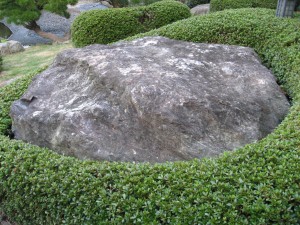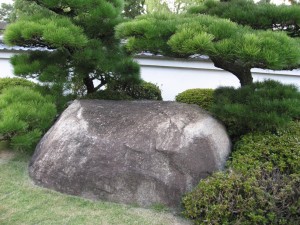An Introduction to Japanese Verbs and Adjectives
When you study Japanese, many questions about Japanese grammar arise. On this page, we introduce verbs and adjectives. You may download our more comprehensive Japanese Grammar Guide, which includes an index, by clicking here and passing through the Lesson Download portal.
You may also download two additional documents related to Japanese grammar: Ga vs. Wa and Japanese Verb Tenses.
In addition, please check out our multiple-choice Japanese Grammar Quiz.
Japanese Verbs

There are two main kinds of verbs in Japanese grammar: u verbs and ru verbs. Both of these verb types have plain speech forms and masu forms. The masu forms are more polite.
The root of a verb is the pre-u or pre-ru form. The stem of a verb is the pre-masu form. For an ru verb, the root and the stem forms are the same.
For example, nomu is a u verb; it means “drink.” Nomimasu is the masu form of nomu. The root of nomu is nom. The stem of nomu is nomi.
Taberu is an ru verb; it means “eat.” Tabemasu is the masu form of taberu. The root of taberu is tabe. The stem of taberu is also tabe.
Nomu and taberu are plain speech verbs. Their masu forms are nomimasu and tabemasu.
U and ru verbs are often used as adjectives. For example, watashi ga taberu pan = “the bread I eat.” Anata ga nonda biiru = “the beer that you drank.”
Desu (meaning “it is”) is a copula, or linking verb. It is neither a u verb, nor an ru verb. Its plain speech form is da.
How to Identify RU verbs and U Verbs
Ru verbs end in iru or eru; you don’t double the ‘t’ when making their te or ta forms. For example, taberu = “to eat,” tabete = “eating,” tabeta = “ate.”
Unfortunately, U verbs are not as easy to define. Most u verbs don’t end in “ru,” but a number of them do. For example, the following verbs are all u verbs: ganbaru (“do one’s best”), suwaru (“sit”),noru (“board a vehicle”), toru (“take”), hairu (“to enter”), hashiru (“run”), iru (“need”), kiru (“cut”), shiru (“know”) and kaeru (“return”). What these verbs have in common is that you double the “t” when making their te or ta forms. For example, the verb shiru = “to know.” Its te form is shitte (“knowing”). Its ta form is shitta (“knew”). The double t’s tell us that it’s a u verb.
Verb Roots
 The root of a verb is the pre-u or pre-ru form. For verbs ending in au, iu, or ou, the root adds a “w” when making the negative form, e.g., kawanai (“won’t buy”), iwanai (“won’t say”), omowanai (“won’t think”). The root also adds a “w” when making the passive form, causative and causative passive forms, e.g., kawareru (“ to buy on”), kawaseru (“to make buy”) and kawaserareru (“be made to buy uncomfortably”). However, the root does not add a “w” when making the “let’s” or “I shall” form, e.g., kaou (“let’s buy”), iou (“let’s say”), omoou (“let’s think”), when making the eba form, e.g., kaeba (“if I buy”), ieba (“if I say”) and omoeba (“if I think”), or when making the potential form, e.g., kaeru (“to be able to buy”), ieru (“to be able to say”), and omoeru (“to be able to think”).
The root of a verb is the pre-u or pre-ru form. For verbs ending in au, iu, or ou, the root adds a “w” when making the negative form, e.g., kawanai (“won’t buy”), iwanai (“won’t say”), omowanai (“won’t think”). The root also adds a “w” when making the passive form, causative and causative passive forms, e.g., kawareru (“ to buy on”), kawaseru (“to make buy”) and kawaserareru (“be made to buy uncomfortably”). However, the root does not add a “w” when making the “let’s” or “I shall” form, e.g., kaou (“let’s buy”), iou (“let’s say”), omoou (“let’s think”), when making the eba form, e.g., kaeba (“if I buy”), ieba (“if I say”) and omoeba (“if I think”), or when making the potential form, e.g., kaeru (“to be able to buy”), ieru (“to be able to say”), and omoeru (“to be able to think”).
For verbs ending in tsu, the root is the pre-su form. For example, the root of tatsu (“to stand”) is tat. Tatanai = “won”t stand.” Tatou = “let”s stand.” Tateba = “if I stand.”
Verb Stems
The stem of a verb is the pre-masu form. For an ru verb, the root and the stem are the same. For example, taberu = tabemasu = “eat.” Its root is its pre-ru form, or tabe. Its stem is its pre-masu form, which is also tabe. By way of contrast, nomu = nomimasu = “drink.” Its root is its pre-u form, or nom. Its stem is its pre-masu form, or nomi.
Transitive/Intransitive Verb Pairs
There are many verb pairs in Japanese grammar in which one verb is transitive and the other is intransitive. These verbs generally employ the same kanji but have different endings. For example, 閉める shimeru (“close,” e.g., I will close the door) is transitive and 閉まる shimaru (“close,” e.g., the door will close by itself) is intransitive.

The e rule says that, looking at transitive/intransitive verb pairs, transitive verbs tend to end in eru, e.g., akeru (“open”) is transitive and aku (“open”) is intransitive; shimeru (“close”) is transitive and shimaru (“close”) is intransitive. But su usually trumps eru in determining which verb is transitive, e.g., kesu (“turn off”) is transitive and kieru (“turn off”) is intransitive; dasu (“put out”) is transitive and deru (“go out”) is intransitive; nekasu (“put to sleep”) is transitive and neru (“go to sleep”) is intransitive; kowasu (“break”) is transitive and kowareru (“break”) is intransitive.
Apparent exceptions to the e rule include kiru (“cut”) which is transitive and kireru (“be cut”) which is intransitive; uru (“sell”) which is transitive and ureru (“be sold”) which is intransitive; nuru (“paint”) which is transitive and nureru (“get wet”) which is intransitive. These intransitive exceptions all seem to be potential forms of their related transitive verbs, i.e., kireru also = “able to cut”; ureru also = “able to sell”; and nureru also = “be able to paint.” Perhaps they have acquired new meanings, in addition to their potential meanings, with the passage of time.
The te form of intransitive verbs is always followed by imasu, whether describing an ongoing action or a fixed condition. For example, mado ga aite imasu can mean either “the window is opening” or “the window is open.” Aite is the te form of aku (“open,” intransitive). Note that, since aku is an intransitive verb, you must use it with imasu. That is, you can never say mado ga aite arimasu.
Similarly, the te form of transitive verbs is also followed by imasu, when describing an ongoing action, e.g. mado o akete imasu = “I am opening the window.”
However, the transitive aru rule says that the te form of transitive verbs is usually followed by arimasu when describing a fixed condition. For example, mado o akete arimasu = “the window is open” (by someone). (Mado ga akete arimasu is also OK, since you may use either o or ga after the direct object of a transitive verb when describing a fixed condition.)
Unfortunately, some verbs are exceptions to the transitive aru rule, e.g., Hajimete imasu = “it is started” (by someone). Nakushite imasu = “it is lost” (by someone). Another exception occurs when you want to imply that the speaker performed the action resulting in the fixed condition. In that case, you can use imasu with a transitive verb, e.g., mado o akete imasu = “the window is open” (by me).
Japanese Adjectives
There are two main kinds of adjectives in Japanese grammar: i (pronounced “ee”) adjectives and na adjectives. I adjectives end in “i” and modify a noun directly. For example, oishii = “delicious.” Oishii pan = “delicious bread.”

To make the stem of an i adjective remove the final “i.” For example, the stem of oishii is oishi.
Na adjectives are followed by na when they are used to modify a noun. For example, shizuka = “quiet.” Shizuka na heya = “a quiet room.”
You may use desu after an i adjective. However, you may not use da after an i adjective. Oishii desu (meaning, “it”s delicious”) is OK. Oishii da is not OK. Using plain speech, you may simply say oishii by itself, if you mean “it”s delicious.”
You may use either desu or da after a na adjective. For example, kono heya wa shizuka desu = kono heya wa shizuka da = “as for this room, it”s quiet.”